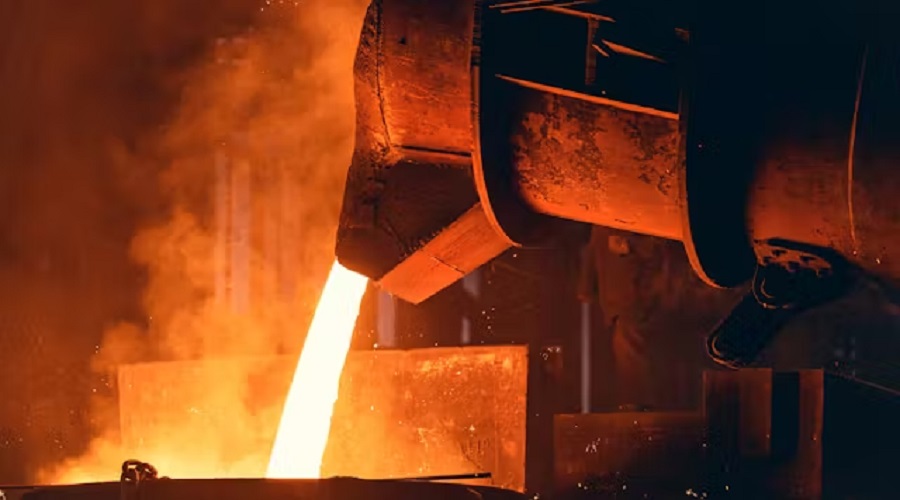The automotive industry is a constantly evolving field where durability, efficiency, and cost-effectiveness dictate material selection. Among the most widely used materials, gray and ductile iron castings have proven to be indispensable in vehicle manufacturing. Their unique combination of strength, heat resistance, and affordability makes them ideal for critical components, from engine blocks to suspension systems.
With automakers striving for better fuel efficiency, longevity, and performance, the demand for materials that can withstand high mechanical stress while keeping production costs low is more crucial than ever. Let’s explore how gray and ductile iron castings contribute to modern vehicle manufacturing, ensuring cars remain reliable, safe, and efficient.
Strength and Durability: Reliable Materials for Vehicles
Vehicles endure tremendous forces daily, from the impact of rough roads to the stress of high-speed driving. Without high-strength materials, automotive components would fail under these conditions, compromising safety and performance.
This is where gray and ductile iron castings excel. These iron alloys provide the structural integrity and durability required for critical vehicle parts.
-
Gray iron is known for its high compressive strength and excellent vibration damping properties, making it the go-to material for engine blocks, brake components, and heavy-duty housings. It prevents premature wear by absorbing vibrations, reducing stress on surrounding parts.
-
Ductile iron, also called nodular iron, offers greater tensile strength and impact resistance than gray iron. This makes it an excellent choice for components that experience dynamic loads, such as suspension parts and steering knuckles. Unlike brittle materials, ductile iron can flex under stress without cracking, enhancing its reliability in demanding automotive applications.
By combining exceptional load-bearing capabilities with superior fatigue resistance, gray and ductile iron castings ensure that automotive parts last longer, function efficiently, and maintain structural stability under extreme driving conditions. This strength translates directly into cost savings by reducing the need for frequent repairs and replacements.
Cost-Effectiveness: Affordable Production and Performance
While strength and durability are essential, cost efficiency is equally crucial for automakers looking to keep vehicle prices competitive. Gray and ductile iron castings offer a unique advantage by delivering superior mechanical properties at a fraction of the cost of alternative materials like aluminum or high-strength steel.
Why Are Iron Castings Cost-Effective?
-
Abundant and Affordable Material: Iron is widely available, making it cheaper than other high-performance metals used in vehicle manufacturing.
-
Efficient Casting Process: Casting allows manufacturers to produce complex shapes in a single mold, reducing the need for extensive machining or additional assembly. This streamlined production process lowers manufacturing costs while ensuring high precision.
-
Longer Component Lifespan: Since iron castings are highly durable, they reduce maintenance and replacement costs, offering long-term savings for both automakers and consumers.
For example, while aluminum is lighter, it is also more expensive and less resistant to wear in high-friction applications such as brake rotors. Gray iron, with its natural ability to dissipate heat and withstand stress, provides a longer-lasting and more affordable solution.
The ability to balance cost with performance makes gray and ductile iron castings a smart choice, ensuring that manufacturers can produce high-quality vehicles while keeping production expenses under control. However, cost-effectiveness isn’t just about affordability—it’s also about delivering long-lasting materials that minimize replacement costs, which leads us to their resistance to wear and extreme conditions.
Heat and Wear Resistance: Withstanding Extreme Automotive Conditions
Automotive components operate in high-temperature and high-friction environments, especially in areas like engines, braking systems, and suspension components. Without materials that can endure extreme heat and mechanical stress, vehicles would suffer from premature failure and decreased safety.
Gray and ductile iron castings are engineered to withstand these harsh automotive conditions, ensuring optimal performance even in demanding environments.
How Do These Materials Handle Extreme Conditions?
-
Engine blocks and cylinder heads made from gray iron provide excellent thermal stability, preventing warping or cracking under the heat generated by combustion.
-
Brake rotors and drums leverage gray iron’s superior heat dissipation properties, reducing the risk of brake fade and improving braking efficiency.
-
Suspension and drivetrain components crafted from ductile iron resist fatigue and mechanical stress, ensuring long-term durability even on rough terrains.
The superior heat and wear resistance of these iron castings ensures that vehicles remain safe, efficient, and low-maintenance. By handling thermal expansion and mechanical loads effectively, they provide a level of reliability that alternative materials often struggle to match.
As automakers continue to innovate, another major factor they must consider is weight reduction to enhance fuel efficiency. While iron is traditionally heavier than other metals, modern advancements in casting techniques help optimize weight without compromising durability.
Lightweighting and Design Flexibility: Optimizing Parts Without Compromise
Reducing vehicle weight is essential for enhancing fuel efficiency, improving handling, and meeting strict emission regulations. While iron is inherently heavier than aluminum, gray and ductile iron castings have evolved to meet lightweighting demands without sacrificing strength.
How Can Iron Castings Contribute to Lightweighting?
-
Thin-Walled Casting Technology: Advanced casting techniques allow manufacturers to produce thinner yet strong iron components, reducing overall weight while maintaining durability.
-
Optimized Hollow Structures: Ductile iron can be shaped into hollow yet reinforced structures, providing the same strength as solid metal but at a lower weight.
-
Strategic Material Use: Instead of replacing iron entirely, automakers use hybrid designs that combine iron in high-stress areas with lighter materials in less critical zones.
This ability to balance strength with weight optimization makes gray and ductile iron castings a valuable part of modern automotive engineering, where efficiency and performance must go hand in hand. The versatility of these materials ensures that automotive components remain strong, lightweight, and cost-effective—a perfect combination for competitive vehicle manufacturing.
With these benefits in mind, let’s take a closer look at the specific automotive components that rely on iron castings to function effectively.
Common Automotive Applications: Key Components Using Iron Castings
Given their unmatched combination of strength, affordability, heat resistance, and design flexibility, gray and ductile iron castings are widely used in several critical vehicle components.
Where Are These Materials Used in Cars?
-
Engine blocks and cylinder heads: Gray iron provides heat resistance and vibration damping, ensuring reliable engine performance.
-
Brake rotors and drums: High wear resistance and superior heat dissipation make gray iron the ideal choice for braking systems.
-
Steering and suspension components: Ductile iron’s impact resistance and flexibility make it a trusted material for steering knuckles and control arms.
-
Axle housings and differential cases: These parts require high-strength materials to handle torque and mechanical loads.
-
Transmission cases: Ductile iron ensures long-term durability and smooth power transfer, reducing wear over time.
These applications highlight the versatility of iron castings, proving that they are essential to modern automotive performance, safety, and reliability.
Driving the Future of Automotive Manufacturing
As the automotive industry pushes for greater efficiency, durability, and cost savings, gray and ductile iron castings remain a cornerstone of vehicle manufacturing. Their unmatched strength, affordability, heat resistance, and design flexibility make them an essential material for critical automotive components.
While advancements in lightweight materials continue to emerge, iron castings continue to evolve with innovative casting techniques, hybrid material strategies, and optimized designs. Automakers can rely on these iron alloys to create vehicles that are not only stronger and safer but also more cost-effective and fuel-efficient.
In the fast-paced world of automotive engineering, gray and ductile iron castings are not just a legacy material—they are the foundation of the industry’s future.

